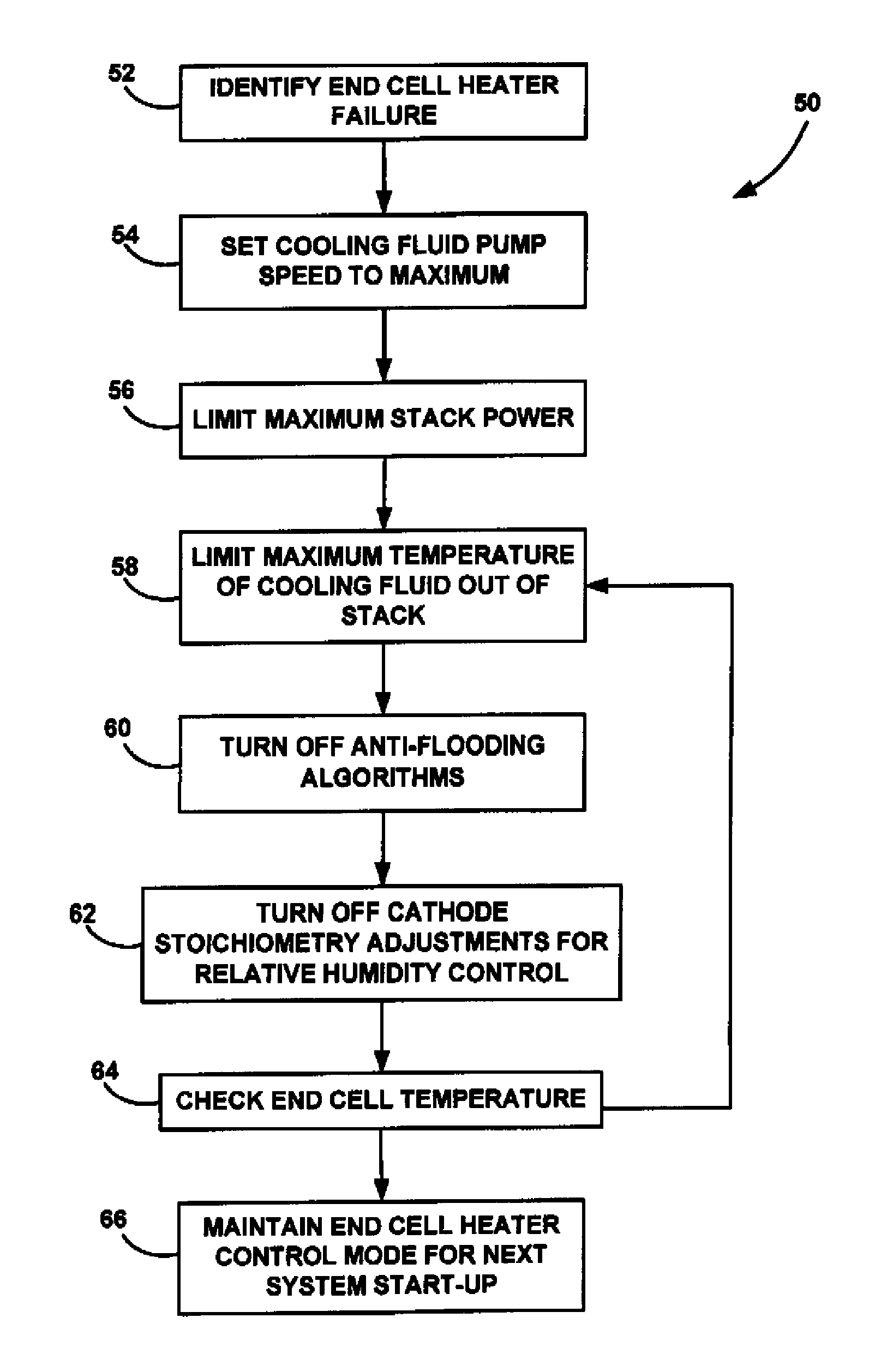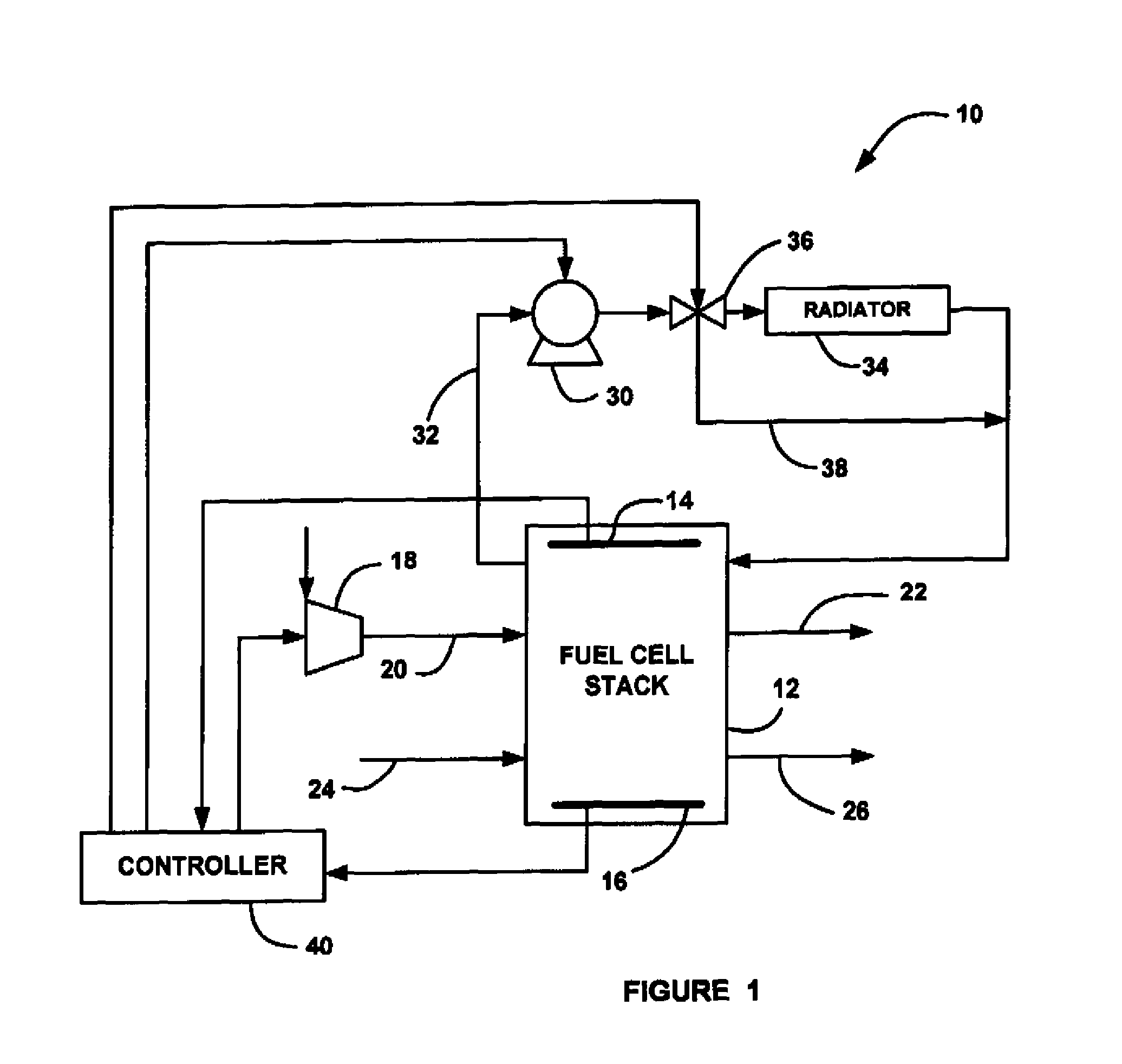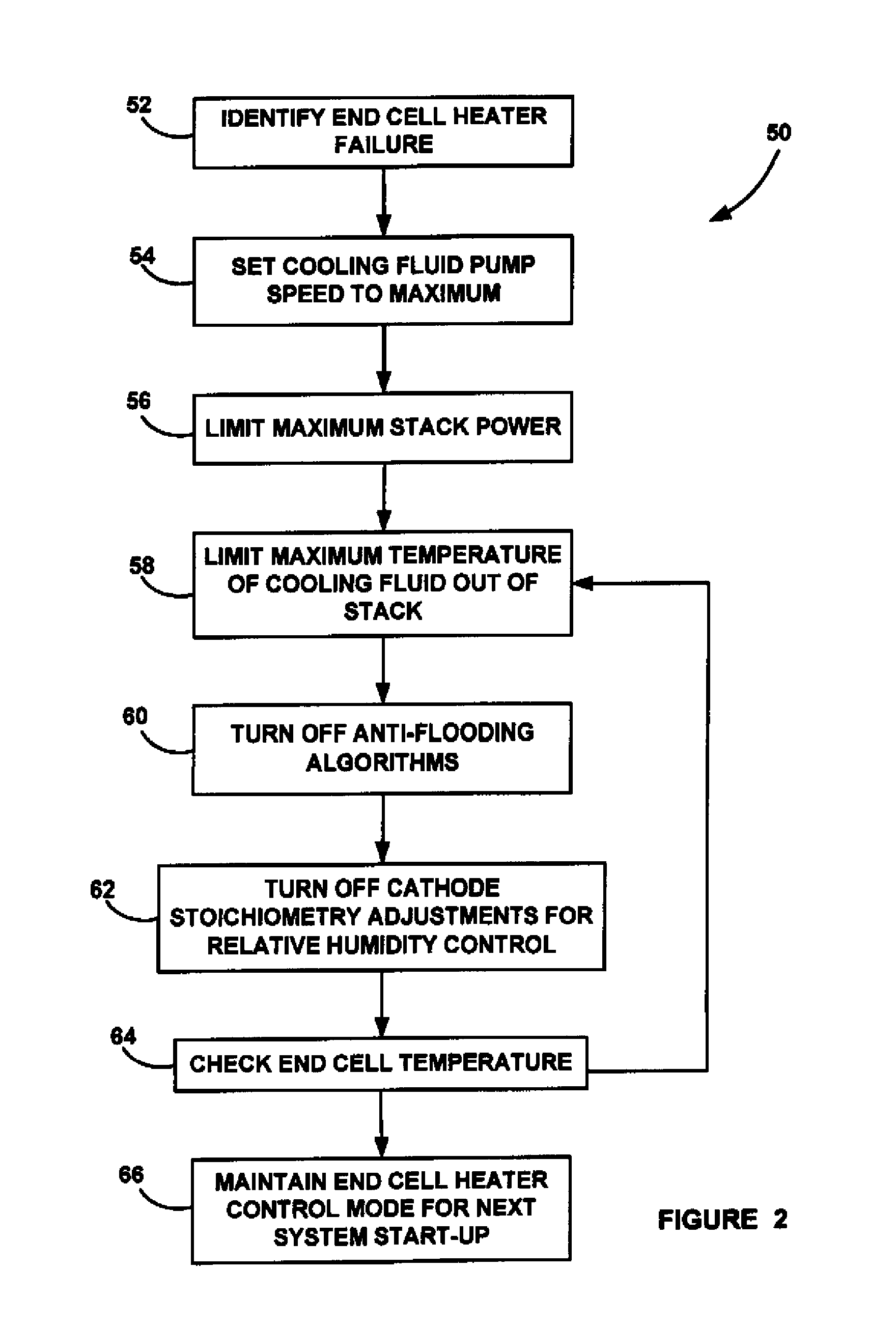Method for improving FCS reliability after end cell heater failure
a technology of end cell heater and reliability, which is applied in the direction of fuel cells, electrical equipment, electrochemical generators, etc., can solve the problems of affecting stack stability, affecting the reliability of stacks, and the accumulation of water in reactant gas flow channels is particularly troublesome at low stack output loads, so as to improve the reliability of fuel cell systems
- Summary
- Abstract
- Description
- Claims
- Application Information
AI Technical Summary
Benefits of technology
Problems solved by technology
Method used
Image
Examples
Embodiment Construction
[0015]The following discussion of the embodiments of the invention directed to a system and method for improving fuel cell system reliability in the event of end cell heater failure is merely exemplary in nature, and is in no way intended to limit the invention or its applications or uses.
[0016]FIG. 1 is a plan view of a fuel cell system 10 including a fuel cell stack 12. The fuel cell stack 12 includes end cell heaters 14 and 16 positioned in the end cells of the stack 12. In one non-limiting embodiment, the end cell heaters 14 and 16 are resistive heaters. The type of end cell heater, the positioning of the end cell heaters 14 and 16 and the control of the end heaters 14 and 16 during normal operation of the fuel cell system 10 are all well known parameters to those skilled in the art.
[0017]The fuel cell stack 12 receives cathode input air from a compressor 18 on cathode input line 20, and outputs cathode exhaust gas on cathode output line 22. Likewise, the fuel cell stack 12 rece...
PUM
| Property | Measurement | Unit |
|---|---|---|
| stack power | aaaaa | aaaaa |
| temperature | aaaaa | aaaaa |
| speed | aaaaa | aaaaa |
Abstract
Description
Claims
Application Information
 Login to View More
Login to View More - R&D
- Intellectual Property
- Life Sciences
- Materials
- Tech Scout
- Unparalleled Data Quality
- Higher Quality Content
- 60% Fewer Hallucinations
Browse by: Latest US Patents, China's latest patents, Technical Efficacy Thesaurus, Application Domain, Technology Topic, Popular Technical Reports.
© 2025 PatSnap. All rights reserved.Legal|Privacy policy|Modern Slavery Act Transparency Statement|Sitemap|About US| Contact US: help@patsnap.com



